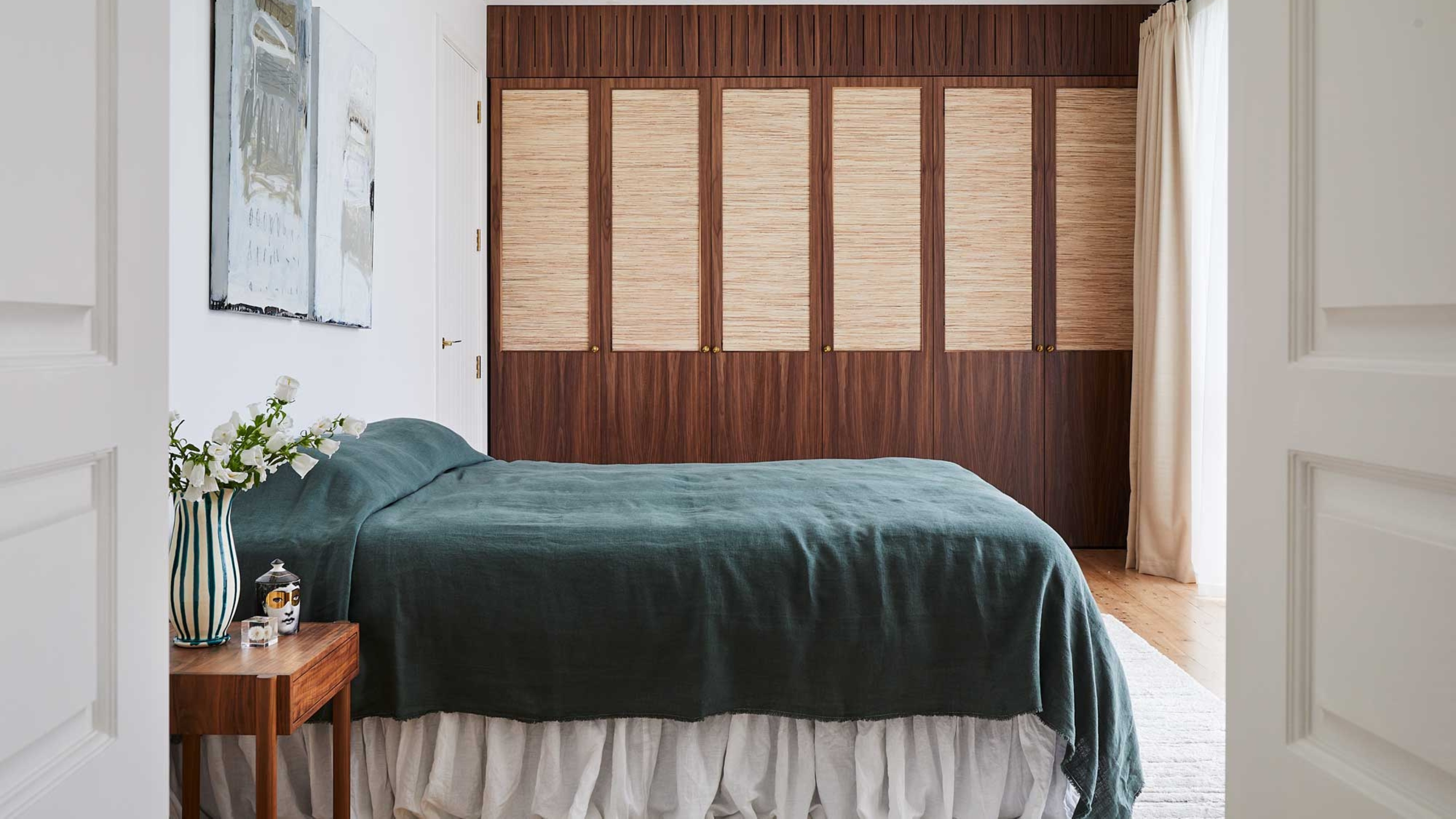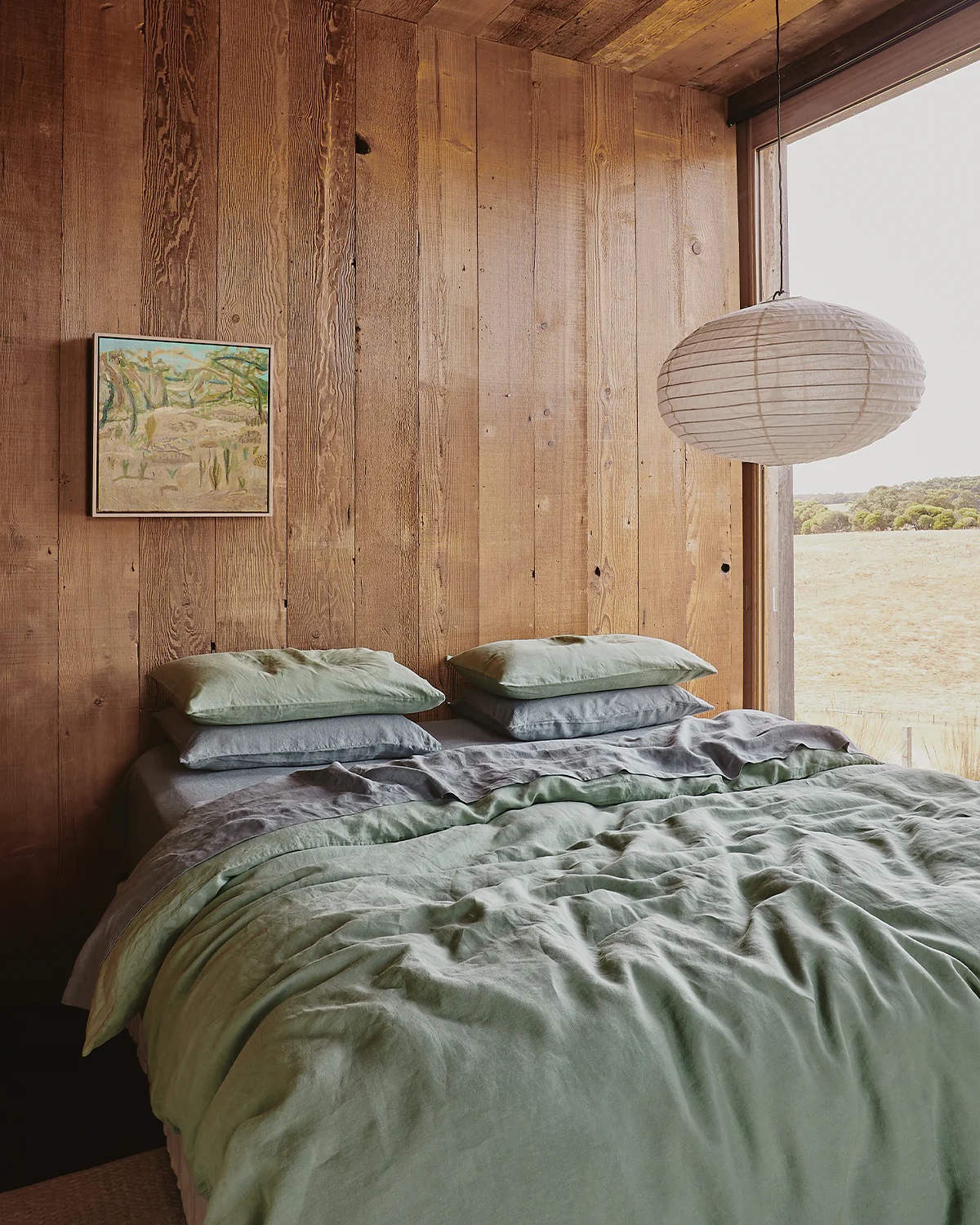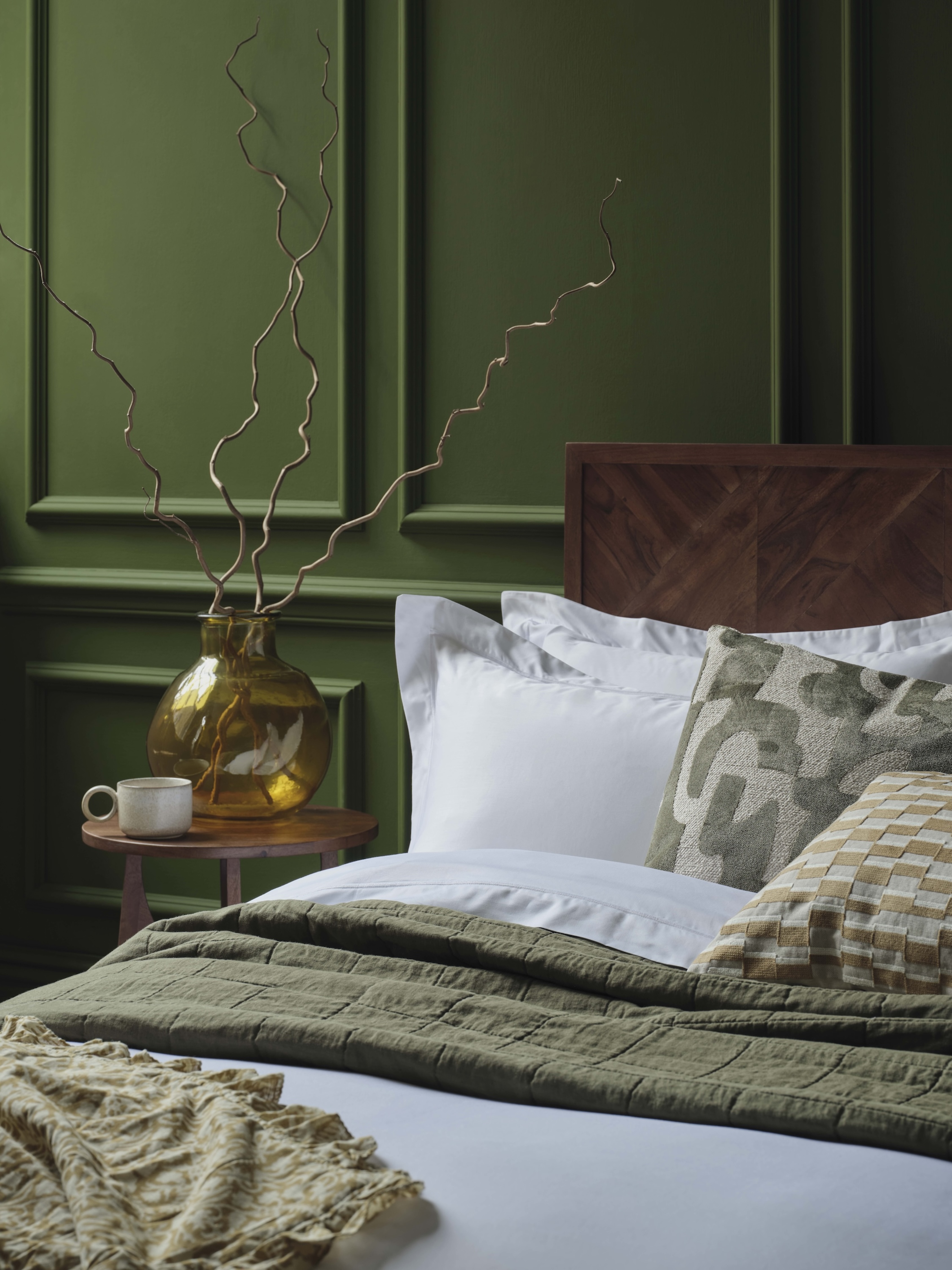
My partner and I are extremely divided when it comes to where our loyalty lies in the flat vs fitted sheet debate. For me, a bed isn't complete without both a flat and fitted sheet neatly tucked in. For him, a flat sheet is only an annoying encumbrance to a good night's sleep. So, who is right?
The basic purpose of each type of bedding is simple: a flat sheet (sometimes called a top sheet) is a loose layer that lies between you and your blanket or duvet cover. A fitted sheet, in comparison, fits snugly over your mattress with elastic corners that hold it in place.
Where the fitted sheet is a staple of any well-made bed, a flat sheet — even I'll admit — is negotiable, with many choosing to forgo it. But there are benefits to both, and below, I'm diving under the covers to discover the difference between a flat vs fitted sheet, and whether you really need both.

What constitutes a 'well-made' bed depends on who you ask. If you're still wondering what a top sheet is exactly, and how it differs from a flat sheet, I asked Livvi DiCicco, a certified sleep science coach at Mattress Clarity, to explain.
"The fitted sheet protects your mattress and stays in place while you sleep, while the flat sheet is a barrier between your body and your top layer, helping regulate temperature and hygiene," she says.
While it adds an extra layer of warmth (or a lighter layer when it's hot), the added benefit of a flat/top sheet is that it keeps your bedding cleaner for longer. "The flat sheet also keeps your duvet or blanket cleaner by catching sweat and skin oils," Riley Otis, a certified sleep science coach at Sleepopolis, tells me.

If you prefer a minimalist bedding style or are a hot sleeper, you may prefer to stick to your duvet or coverlet as a single layer. But adding a flat sheet can actually help you regulate temperature and sleep better in the heat (especially if you choose to sleep under the flat sheet as a standalone cover).
For those (ahem, my partner), who claim that flat sheets just end up getting tangled and bunched up in the bed, Livvi adds that it's a fair point, but when it comes to the fitted sheet, "it is always worth using, as there’s no real upside to going without it."
And then, of course, it's worth considering the flat vs fitted sheet debate when it comes to styling your bed. Layering both instantly elevates the look, if you ask me. Not only can the flat sheet offer a moment of color, but it creates a more dynamic, layered, or hotel-style feel, and who doesn't want that?
To really make the sheets stand out, try playing with unexpected bedding color combinations, rather than just the classic all-white. A baby blue flat sheet paired with a light olive green fitted sheet makes getting into bed every night that much more exciting.
Pinstripe bedding is very in vogue, and especially makes an impression when used as a flat sheet for that extra charming detail. I use Piglet in Bed's sheets at home and can attest to the comfort, so if you are looking for a breezy top sheet, this cotton piece is a fabulous choice.
Nothing beats a crisp white sheet set, and for that, The White Company is always a trusted go-to. If you like what you are seeing, you can shop the brand's entire Savoy Egyptian cotton collection on the site as well — get the fitted, flat, and more.
Speaking of bedding that helps you stay cool and that looks good on your bed, linen bed sheets have quickly become my favorite material. This oatmeal French flax sheet set is the ultimate selection for those craving minimalist yet cozy bedding.
Making the bed may seem like an easy task, but it is also a chance to further express your interior design creativity. And for that, checking out all the latest bedding trends will be your greatest guide.







